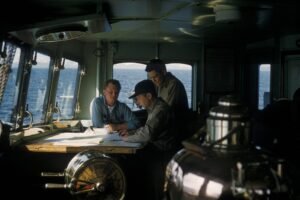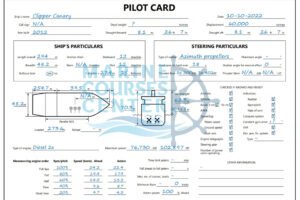maintenance vessel | ship painting | ship deck maintenance | seamanship | part 11 | ship maintenance | vessel maintenance | ship repairing
maintenance vessel | ship painting | ship deck maintenance | seamanship | part 11 | ship maintenance | vessel maintenance | ship repairing
tools used in carrying out maintenance
Chipping and Scaling Tools
Paint Brushes
(New brushes should be soaked in water before use to swell the butt and tighten the bristles)
Ship’s Routine Maintenance Program
1) Sweeping:
2) Washing:
All painted surfaces, except the outer hull should be washed with soda or liquid soap to remove all dirt and grease.
After washing the decks should be thoroughly rinsed with water.
3) Cleaning:
Navigating bridge, glass windows and port-holes should be washed and polished with chamois leather.
Brass should be polished with metal polish, and a dry cloth.
4) Chipping and Scaling:
Plates covered with rust should be chipped, scraped and wire brushed.
5) painting
Two coats of metal primer are applied to chipped surfaces before the under coat and the topcoat is painted.
6) Wood –Sheathed decks:
Wood could be cleaned with caustic soda, then washed off.
Holystones could also be used for removing “dead” wood from the surface.
7) Cleaning Bilges:
Lift off the timber boards and show the margin plate gussets.
Clean out all the bilge and the strum box.
Flush out with some water.
Check the suction of the strum box before closing the bilge.
When it dries, paint with bitomastic paint.
8) Cleaning Fresh-Water tanks:
After draining the tank open both manholes.
Make sure to ventilate the tank.
Flush the tank with water all around to ensure that all rusty water is drained away.
Wash out thoroughly with brushes and fresh water.
Tank surfaces should be cement washed (covered).
There is a special ceramic paint may be used in fresh water tanks instead of the cement wash.
Leave for twenty-four hours to dry before filling.
The tank water should not be used for the first time (only used in cleaning).
9) Cleaning Double-Bottom tanks:
Make sure that the tank is empty.
Open both double-bottom manholes
The tank must be well ventilated thoroughly to make sure that there is fresh air before anyone enter to the tank.
Portable Deck lights should be provided at double-bottom tanks. After cleaning. Chipping and removal of residues, double-bottom tanks are painted with bitomastic paint.




